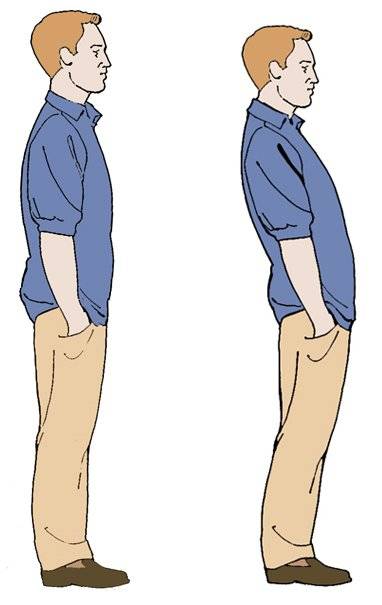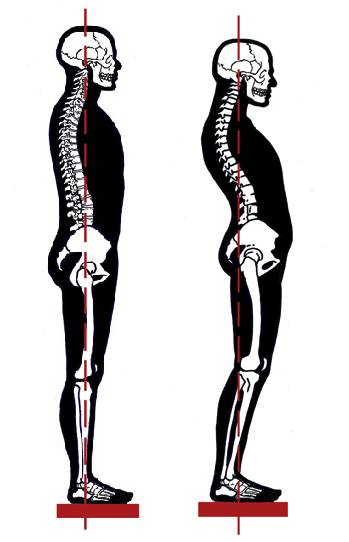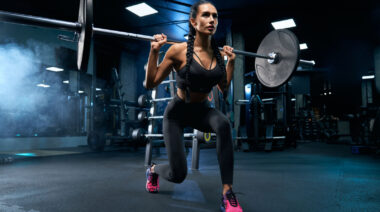The quadriceps (quads) is the group of four muscles at the front of the thigh. The hamstrings are three muscles at the back of the thigh. These two muscle groups work in opposition to each other, though they tend to have a dysfunctional relationship. The quads don’t call often enough and when they do the hamstrings don’t pick up the phone. They are supposed to work together as partners in the anatomical dance known as reciprocal inhibition. It is a two-step – the quadriceps must shorten for the hamstrings to lengthen, and vice versa.
The Hamstrings
The three hamstring muscles – semitendinosus, semimembranosus, and biceps femoris – all have their origin on the ischial tuberosities (sit bones) at the base of the pelvis. They all insert on the lower leg, with semitendinosus and semimembranosus connecting to the tibia, the larger of the two shin bones. Biceps femoris attaches to the fibula. They all flex the knee and extend the hip, except for one of the heads of biceps femoris that has no role in extension.

The Quadriceps
The quadriceps are the vastus medialis, vastus lateralis, vastus intermedius, and rectus femoris, the muscle that bears most of the brunt of the forward-leaning thighs. The rectus femoris is the only quadriceps muscle that attaches to the pelvis, with its origin on the ilium. The vastus all originate on the femur according to their names: medialis on the inside, lateralis on the outside, and intermedius at the front of the bone. The four muscles that make up the quads all meet to form a common tendon and insert on the tibia. The vastus muscles all extend the leg at the knee. The rectus femoris does this as well, but it also flexes the thigh at the hip.

Your Tucked Pelvis and How to Fix It
My take on posture is pretty simple. I think the quadriceps tend to be both overly long and full of tension, while the hamstrings tend to be too short and tight. An overwhelming number of people tuck their pelvis during all activities. The tuck of the pelvis draws the sit bones down and forces the femur bones forward. (As shown on the right side of the picture.) The sit bones being drawn down shortens the hamstrings and the femurs pushing forward stretches the quads. It also forces the quads to bear the weight of the upper body because with the pelvis no longer aligned on top of the thighs, a person’s weight can’t transfer through the bones from the spine to the legs.
To help fix all that, I would like to share with you one of my favorite exercises (learned from yoga teacher Jenny Otto many years ago) – block lunges. This simple exercise is the best possible therapist the hamstrings and quads could ever hope to find.

Why Block Lunges Work
Proprioception is the awareness of our movement and spatial orientation generated by stimuli within the body. Proprioceptors communicate with the body to determine both our position and our actions. One proprioceptor is the muscle spindle that is a stretch receptor – it tells the brain how much a muscle could or should stretch. The Golgi tendon organ is a stretch inhibitor – telling the brain to stop stretching a muscle because it has reached its limit.
Block lunges are a fairly passive exercise. The block is placed under the thigh just above the knee so that the block is situated under the tendon, sort of tricking the golgi tendon organs into allowing the quadriceps to lengthen more than it usually might. This is a bit like self-rolling the quads.
When we mush the quads in this position they will eventually stretch. As they lengthen, the thighbone moves backwards allowing the hamstring to move closer to the femur. Stepping back after the first side you might be amazed at the new found space you feel in the hamstring muscle. When I teach block lunges in yoga classes, a majority of the students usually laugh in shock at the result.
How to Do Block Lunges
This pose is a release of the quadriceps, hamstrings and the psoas major. You’ll need three blocks for this.
- Positioned on your hands and knees – or in downward facing dog – step the right foot forward in between your hands. Two blocks should be available for your hands by the front foot.
- Place the third block underneath the quadriceps muscle just above the knee, at the base of the thigh. The idea is for the block to sit under the tendon of the muscle.
- Tuck the back toes and let the weight of the body fall onto the block. Do your best to keep the heel of the back foot pointing straight up toward the ceiling.
- The front leg and hip should not be under any strain. Feel free to make adjustments, stepping the foot wider or turning the foot out.
- You need to stay for ninety seconds to get the full benefits of this pose.
If you think that this exercise is for you, you will need to do it every day for a few weeks at least. It is a cumulative exercise that takes hold with repetition. The quadriceps and hamstrings are stubborn partners that resist change, but a little bit of love from block lunges can go a long way towards healing the divide.
Photos and illustrations courtesy of Jonathan FitzGordon.






